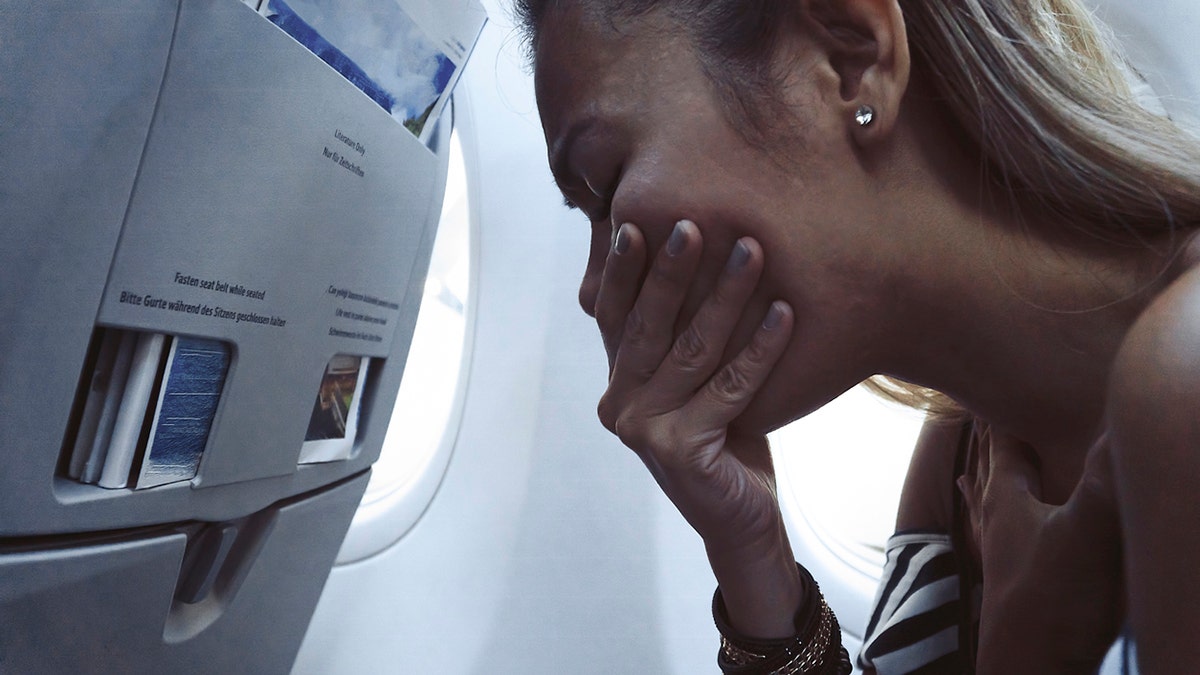There’s a sick person on my flight: What do I do?
Although the chances of contracting COVID-19 on an airplane are low, there are certain precautions passengers can take and protocol in place for the CDC to follow if a sick passenger is reported.
No one likes to be seated near a sick passenger — and that’s especially true during a pandemic.
While the Centers for Disease Control and Prevention (CDC) currently puts the risk of contracting COVID-19 on planes at “low” due to the nature of “how air circulates and is filtered on airplanes,” that doesn’t mean travelers shouldn’t take every health precaution possible, and maintain social distancing from anyone exhibiting symptoms of respiratory illness.
Should you find yourself on a plane with a sick passenger, however, you should be aware that the federal government and the CDC have a protocol in place for the airline industry in the event of such instances.
HOW TO DISINFECT YOUR PLANE SEAT
If a passenger is found to be sick on an international flight, federal regulations require the aircraft crew to report the sick passenger to the CDC before arriving in the U.S. The CDC also explains that, if other passengers were exposed to a sick person on a flight, public health officials can launch what’s called a “contact investigation” to help identify and reach out to anyone who may have had contact with this person during their air travel.

Should you find yourself on a plane with a sick passenger, there are protocols in place in the event of such instances. (iStock)
“Sometimes CDC is notified about a sick traveler while the plane is still in the air or shortly after the plane has landed,” the agency explains online. “However, in most cases CDC is notified when a sick traveler seeks treatment at a medical facility.”
CLICK HERE TO SIGN UP FOR OUR LIFESTYLE NEWSLETTER
The CDC would then be responsible for coordinating an investigation between federal agencies and airlines to determine where and how extensively this person traveled (for instance, did they take connecting flights?) and if they were contagious at the time. If the passenger was deemed to be contagious, investigators consult airlines for flight manifests to determine who may have been in contact with the sick person.
Depending on the disease associated with the passenger’s illness, health officials will create a “contact zone” from the seating chart — or rather, an area of the seating chart identifying passengers who were likely exposed.
State and local health officials then use the manifest and “contact zone” information to track down the exposed passengers, conduct health checks, and outline any subsequent steps.
“Contact zones” on planes, however, may not always be limited to areas around the infected passenger: the CDC says any traveling companions, regardless of where they are seated, are considered part of the “contact zone.” Children under 2, who were seated on their guardians’ laps, are also considered part of any contact zone when investigating a case of measles or rubella.
FOLLOW US ON FACEBOOK FOR MORE FOX LIFESTYLE NEWS
According to a recent study, whether you sit near a window seat or an aisle may determine how much interaction you may have with infected passengers — although it’s important to note that this in no way negates being considered part of a “contact zone” at risk of exposure.
A study by the “FlyHealthy Research Team,” which has been cited by National Geographic, found that those who were seated in the window had less interaction with people located at least two rows away from them, potentially limiting their exposure. Those seated in aisle seats, however, were more likely to come into contact with passengers moving about the cabin to use the lavatory, or with the airline's crew members — an average of 64 contacts, versus the window seat's 12, according to study leads Vicki Stover Hertzberg of Emory University and Howard Weiss of Penn State.
But again, the CDC is still learning about the novel coronavirus and how it spreads, so anyone in close contact with other airline passengers should take every precaution. For example, travelers should avoid touching the eyes, nose or mouth after coming into contact with potentially germ-ridden surfaces, and they should frequently wash their hands with soap and water for at least 20 seconds.
The TSA also allows passengers to bring alcohol-based hand sanitizers in carry-on luggage if the containers measure less than 3.4 ounces.
CLICK HERE FOR COMPLETE CORONAVIRUS COVERAGE
Finally, the CDC advises you monitor your health for two weeks after returning from travel. If you start to feel sick with “fever, cough or have difficulty breathing,” stay home and contact a doctor to report symptoms.
And lastly, anyone with plans to travel — and hopefully this goes without saying — should reconsider flying altogether, and stay home if feeling sick or experiencing symptoms. (After all, you don’t want to find yourself banned for life from your preferred airline.)
